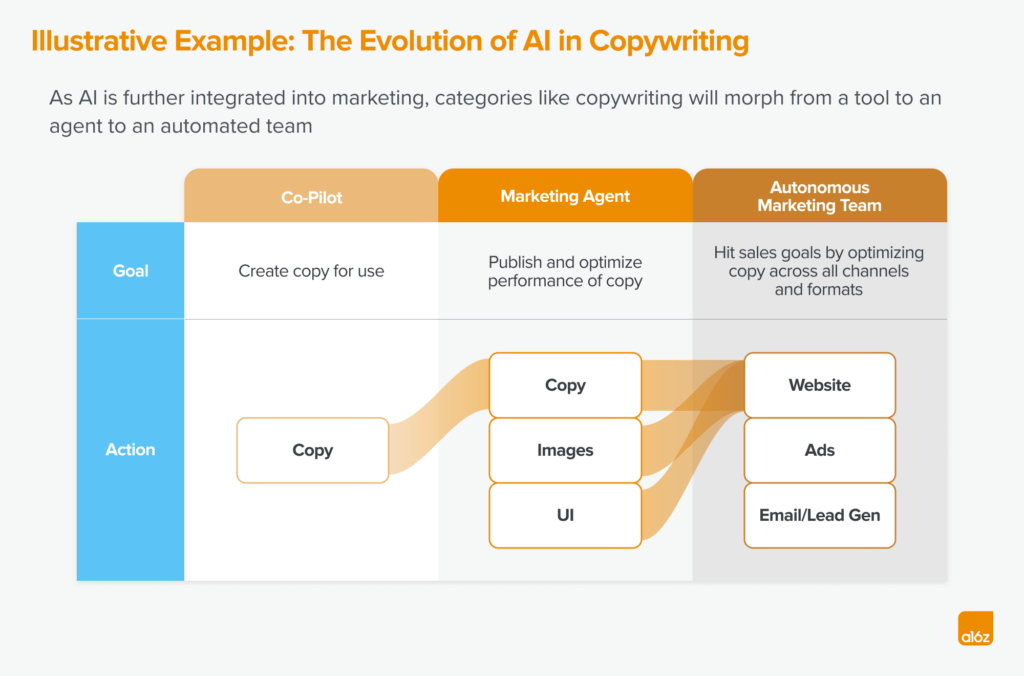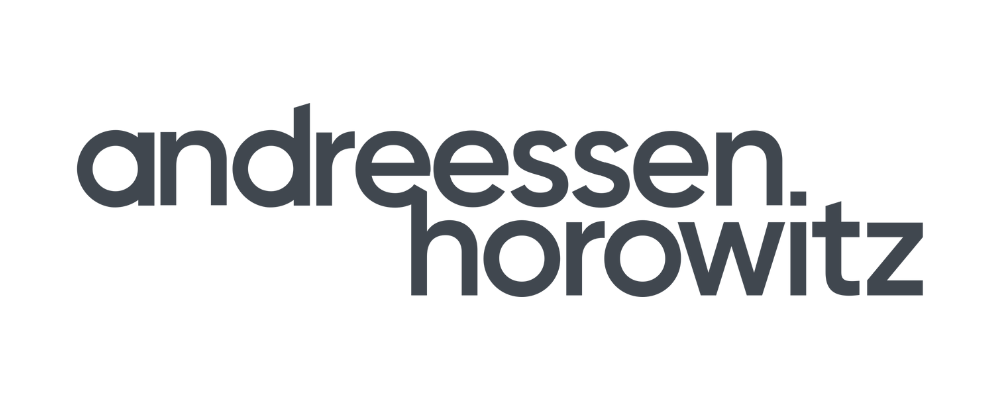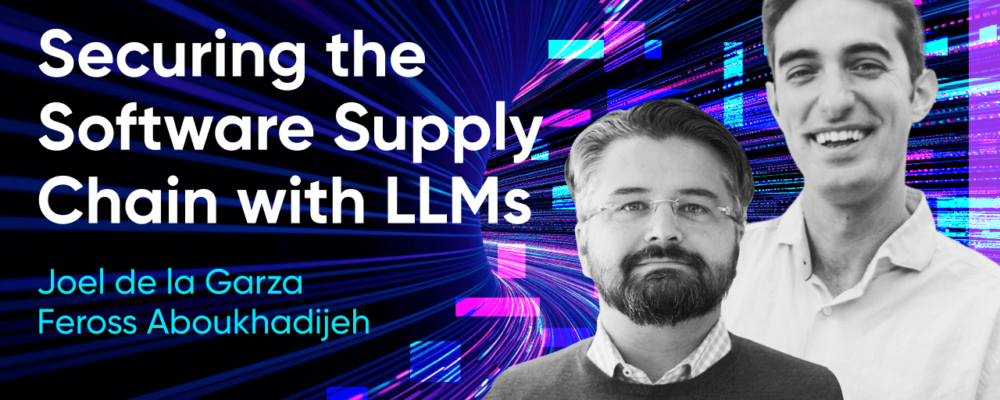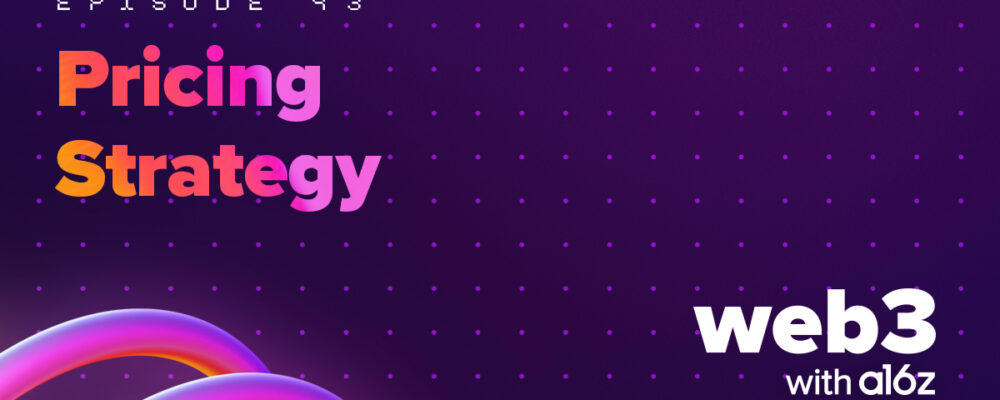Over the past year, generative AI’s capacity for content creation has drawn most of the noisiest headlines: how AI models can instantaneously create Pixar-like shorts starring your pet chihuahua, or drum up the Drake-Kendrick Lamar diss track you never knew you wanted. What gets less attention, but is equally (if not more) valuable, is the business-use side of GenAI content creation: marketing.
Marketing is particularly well suited for adopting generative AI because it is an iterative, creative, and dynamic practice that relies on the types of media — texts, images, video — that have driven LLM development. (This is one of the reasons why many of the first B2B GenAI use cases were for marketing!) Plus, successful marketing plans and assets don’t necessarily have a single “right” solution. This makes marketing different from, say, fintech, where users expect a single, correct answer to queries and there’s a higher threshold for accuracy. And unlike sales, marketing is not dependent on painstakingly building a person-to-person relationship with the customer (although maybe this will become easier in a world of AI-powered sales development representatives).
Concurrently, the way companies view marketing is changing. As people spend their time in increasingly fragmented locations, customers become harder and harder to reach. Marketers are looking for ways to scalably create personalized campaigns and messages to meet people where they are. However, marketing teams are frequently siloed and work across disparate tools that frequently don’t work together. GenAI-based software can and already is helping to bridge this gap.
We’re already beginning to see the financial impact of this shift. According to a recent McKinsey report, GenAI in marketing and sales could reap an estimated $3.3 trillion in annual global productivity, and global payments company Klarna recently said it saves $10 million in costs every year by using GenAI to generate images and reduce their reliance on external marketing partners. But this evolution is just getting started.
In our view, we see three distinct phases in the evolution of adopting GenAI in marketing: the development of marketing copilots, the introduction of marketing agents, and finally, the rise of an autonomous marketing team. We’ll break down each phase below:
Developing Marketing Copilots
The first phase in the evolution of AI marketing (which we’re currently in) is for marketers to use GenAI as their marketing copilots.Thanks to AI, marketers no longer have to spend their days churning out generic email and newsletter copy or paying a copywriter to craft SEO-friendly blog posts; instead, they can outsource their first drafts to ChatGPT and other tools and spend their time on higher-level tasks. Platforms like Jasper or Copy.ai, for example, can scale up social media posts and sales emails in seconds, while products like HeyGen and Synthesia help marketing teams create, as well as edit, studio-quality videos in a matter of minutes (e.g., via Captions).
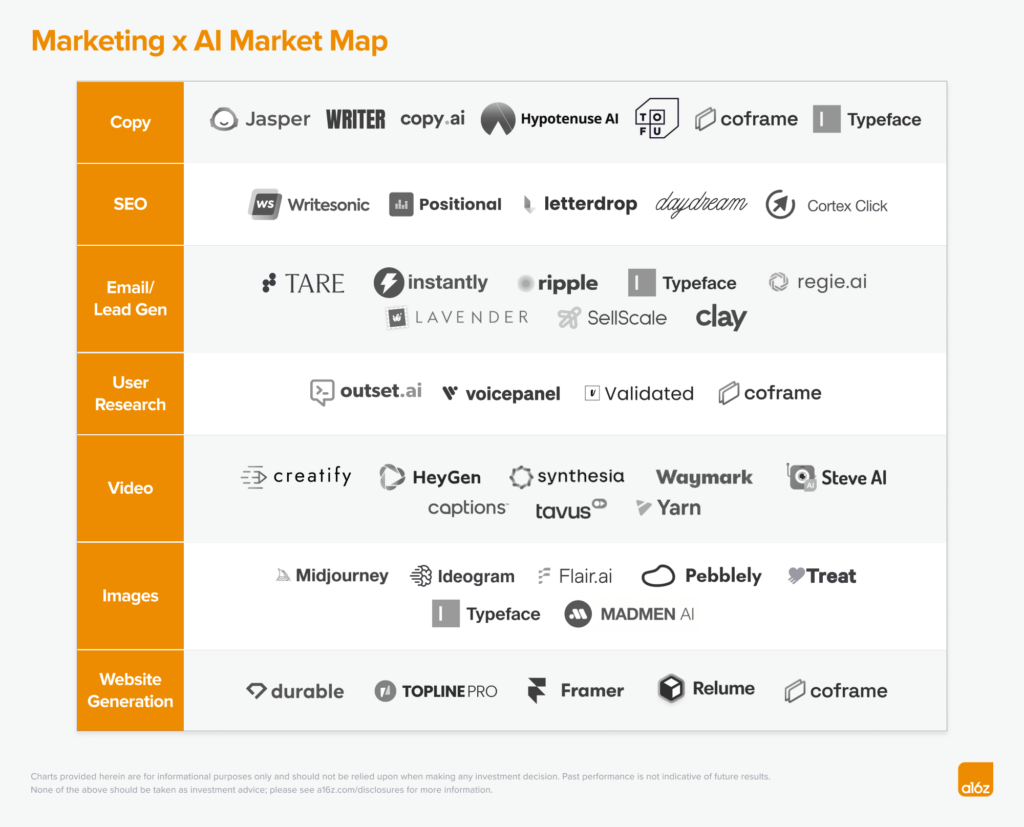
Whereas today’s marketers need to craft and iterate on their own prompts, tomorrow’s marketers will be able to create brand-aligned assets by ingesting signals from existing, and increasingly important first-party data (e.g., customer data platforms, websites, style guides), as well as second- and third-party sources like pixels, UTM codes, lookalike audiences, referrals, and more. A human is still currently needed for content quality control (e.g., approving the likeness of a human figure, verifying that an image is on brand). However, marketing copilots are rapidly improving and will learn based on the marketer’s input and style over time.
Marketing copilots, with their ability to go through large amounts of data from multiple customer data platforms and use all your data in one place (especially as marketing channels continue to increase), will also be able to help with non-content creation work, such as audience segmentation and planning. The data loop also occurs in real time, allowing for real-time iteration. Validated, for example, runs hundreds of digital ads to help companies determine what their customers are specifically interested in. Similarly, Outset and Voicepanel allow research teams to deploy armies of agent researchers to help define new customer segments and test new concepts. Developing research and segmentation copilots are critical for the evolution of AI marketing, as building a tool focused solely on content creation is not enough to guarantee ongoing adoption.
The more successful approach for taking a product from prosumer to enterprise is to use content as a wedge and then get into the workflow, with tools to assist with customer data analysis, segmentation and planning, brand resonance, and more. This is because workflows — the tracking of projects, collaborations, and iterations; aligning a brand’s voice across content; offering performance metrics, etc. — make a product sticky. For example, Jasper started with copy creation and now enables marketing teams to collaborate and gather insights. As video and 3D animations, for example, have been exciting newer verticals, lacking incumbents, these verticals, along with others, are where we also expect to see a number of new companies forming.
Building Marketing Agents
The next stage after equipping the marketer with copilot tools is automating the marketer’s work by using marketing agents. In this phase, we expect marketing to shift from a one-to-many model to a one-to-one hyper-personalized activity. Rather than creating a campaign that appeals to the average customer, marketers will be able to personalize each ad shown to a customer based on specific audience and preference data, which performs better than more generic content shared with a broad audience.
We are just beginning to see companies that are using AI agents to complete narrow, end-to-end (e2e) marketing tasks: A/B testing specific campaign assets, optimizing ad bidding and buying, tracking attribution and analytics, iterating content based on performance, and then making creative decisions (vs. just providing content and insights for the team to use). These agents integrate with performance data (e.g., CTRs) and content creation tools and use judgment to experiment with new variations of content to drive results. They can also likely help gather market research and competitive intelligence, and work across ecosystems from social media to connected TV.
For example, email automation has existed for some time, primarily around templates and workflow around scheduling and tracking emails. But in its future state, an “email marketing agent” will be able to automatically generate the content, personalize the content, set the send schedule, monitor open rates, and adjust the content based on performance metrics — based on information ingested from product pages, audience demographics, campaign cadences, and parameters selected from connected customer data. Coframe is already doing this for copy and images on marketing websites. The GenAI marketing agent will still take direction from a marketing team around the goal of a campaign and how much to spend, but it will manage itself autonomously. Agents will supplement individual roles, allowing marketers to concentrate on more strategic campaigns, targets, and metrics.
AI agents will also allow marketers to run more frequent experiments as the agents can suggest changes, actually make the changes (after the marketers approve), and then analyze the results. This shift of marketing to a one-to-one actively will lead to a convergence between sales and marketing. As our colleague a16z General Partner Andrew Chen calls out, we only have marketing because 1:1 sales for everything is too expensive. The challenge that needs to be overcome here is solving the age-old attribution issue, for which a user’s decision making must be correctly surmised, so that AI can make informed decisions.
Turning into the Automated Marketing Team
The final stage and holy grail for marketing’s AI evolution is for the AI agents to fully take on the duties of a CMO and operate as its own autonomous marketing team. In this phase, swarms of AI agents recreate or supplement a team’s full-service capabilities. By bringing together and optimizing all of the single-purpose agents across all mediums, agents will be able to produce the strategy and assets for a full-fledged marketing plan.
All companies will need to do is input a budget and a goal. Then, the software will ingest the analytics and performance across channels, enabling an omnichannel strategy, and use a collection of marketing agents to run everything from market research to performance marketing and brand campaigns.
How can a blog post’s headline be adjusted to optimize search? How do you iterate on video so it performs best on both TikTok and Instagram? With more integrations, existing assets can also help generate additional types of content. For example, a blog post can provide the basis for generating a landing page, SDR sequences, and radio or television ad copy. Brand and performance marketing can now work more closely together and both be more data-driven.
The companies created in this stage will likely start from a vertical, like video or email, and evolve over time. The automated video creator can learn how to optimize performance and become the agent. And it’s likely that the agents will start expanding into second verticals. Klaviyo, for example, started with email, and then added text message communication, as it’s an extension of similar messaging and customer outreach. Either through buying or building, you end up with platforms like Adobe or Salesforce Marketing Cloud that companies gravitate toward and capture the full stack of marketing tools.
There is also likely to be a split between B2B- and B2C-focused platforms, given the different functions to optimize (i.e., sales leads vs. products sold). And the level of complexity and user experience dictates a different product for SMBs vs. enterprises. In many ways, the SMB gets more leverage, because they now suddenly have the power of a full marketing team —whereas in the past, they may have only had a single marketer (or more likely, an owner dedicating a tiny portion of their time to marketing). What we’ll likely see for SMBs is an aggregated set of more basic content creation offerings, even in the copilot phase, as they don’t have the time or resources to manage a variety of separate tools.
What does this mean for the marketing team? Someone still needs to set the vision around what each marketing campaign is aiming to achieve, as well as the campaign’s tone and overall budget. That someone could be a CMO or Vice President of Marketing-level leader, or, potentially, a go-to-market leader that can now better coordinate across marketing and sales. Overall, the market potential of an automated team is much larger than what the potential has been for marketing tech in the past, since this new opportunity now takes on agency and services revenue, in addition to software spend.
Where Are We Now?
Software is steadily moving from just providing marketing teams with tools and copilots, to automating more of the team’s functions. Right now, we’re still mostly in the early innings of this phase, but companies are starting to expand into workflows. We’re also watching what Meta and Google, and other platforms with walled gardens, are offering (e.g., ad image generation) and what data they make accessible. As agent capabilities improve, the placement, publishing, and optimization of a marketing channel will happen autonomously, and the automated marketing team won’t be far off from there.
“Andreessen Horowitz is a private American venture capital firm, founded in 2009 by Marc Andreessen and Ben Horowitz. The company is headquartered in Menlo Park, California. As of April 2023, Andreessen Horowitz ranks first on the list of venture capital firms by AUM.”
Please visit the firm link to site


